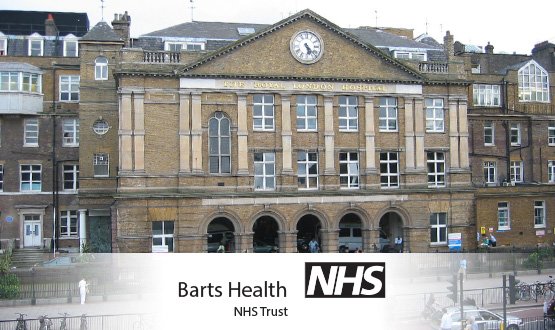Barts Health NHS Trust is exchanging patient information in real time with more than 100 practices across East London via Cerner’s Health Information Exchange.
Barts Health was the first English trust to go live with Cerner’s HIE in late 2013, with GP information available via a button embedded in its Millennium electronic patient record system. Usage has hit up to 1800 views a month.
It is now available at well over 100 GP practices in the East London area, including all 36 in Tower Hamlets and 57 out of 60 in Newham. Another 26 in Waltham Forest have also recently gone live.
Their information is shared with the acute trust via Healthcare Gateway’s Medical Interoperability Gateway and includes information such as; appointments; adverse reactions; medications; problem lists; procedures; and vaccinations.
All the live practices are Emis users, but Barts is in talks with TPP and INPS to allow users of these systems to also integrate with the HIE.
Barts’ chief clinical information officer Charles Gutteridge said there are plans to link with the HIE at Homerton University Hospital NHS Foundation Trust before the end of the year. The Barts team is also in discussions with NHS City and Hackney CCG about extending coverage even further.
When it first went live, GPs could only see past and future appointments from the hospital system. Now they can see a range of clinical documents including clinic letters and discharge summaries. These include structured data and some free text.
Gutteridge said the trust is yet to realise the resource benefits of making these available online as they are currently still posted and emailed to GPs as well.
He said the ultimate aim is to stop emailing and posting and instead send information directly into GPs’ clinical systems via the HIE. He said posting of these summaries will stop once the Royal London Hospital is live with displaying its documents on the HIE.
Next will be a debate with primary care about whether they can stop emailing discharge summaries.
GP at Chrisp St health centre Kambiz Boomla said it took slightly longer than expected to get all practices signed up and agreements activated to use the HIE.
GPs want to eventually see information sent through the HIE directly into their clinical systems. He said the exchange is especially helpful when dealing with new patients at a practice when their notes have not yet arrived as they will most likely have a hospital record. East London’s population is transient with around 20% turnover at practices every year.
Boomla and informatics lead for Newham CCG Bhupinder Kohli both access the HIE once or twice during each surgery and perhaps a couple of times again afterwards. Patient consent to view is requested at the point of care.
Kohli said it saves a lot of effort in having to ring the hospital to get up-to-date information on his patients. It also prevents regular phone calls from the hospital to the practice requesting a fax of patient information such as medicines.
“It’s not hard to get GPs to want to use it, it’s so easy to use you just have to click a button,” he said.
“It’s so valuable, it’s going to become a ‘bread and butter’ thing as it already has in the hospital and increasingly it is for GPs.
He said the most complaints he had in a week about the HIE was when it stopped working in one practice.
GPs have requested to see more information from the hospital, such as radiology and pathology results.

